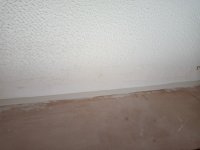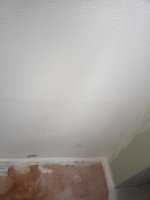Skimplaster
New Member
I thought it best to start a new thread on this. Thank you all for your replies on my issues so far!
I have decided to overboard my artex, this seemed a good idea at first. But after some consideration, I am worried that it may contain asbestos, and as it it an old house it's safest to assume it does contain it. I've not had it tested. I'm getting a plaster in to do it for me but worried as I've no guarantee that he will use a stud / joist detector to screw some neat, tidy holes - he may just bash holes through to find joists as this is much quicker, but obviously this could be dangerous as it disturbs the asbestos and releases it into the air. Even if neat screw holes are drilled this would still disturb the asbestos potentially and push fragments of it behind the board. I know that skimming is not as strong as overboarding but at least it is safe in terms of asbestos. What is the best and safest way to deal with it?
I have decided to overboard my artex, this seemed a good idea at first. But after some consideration, I am worried that it may contain asbestos, and as it it an old house it's safest to assume it does contain it. I've not had it tested. I'm getting a plaster in to do it for me but worried as I've no guarantee that he will use a stud / joist detector to screw some neat, tidy holes - he may just bash holes through to find joists as this is much quicker, but obviously this could be dangerous as it disturbs the asbestos and releases it into the air. Even if neat screw holes are drilled this would still disturb the asbestos potentially and push fragments of it behind the board. I know that skimming is not as strong as overboarding but at least it is safe in terms of asbestos. What is the best and safest way to deal with it?


